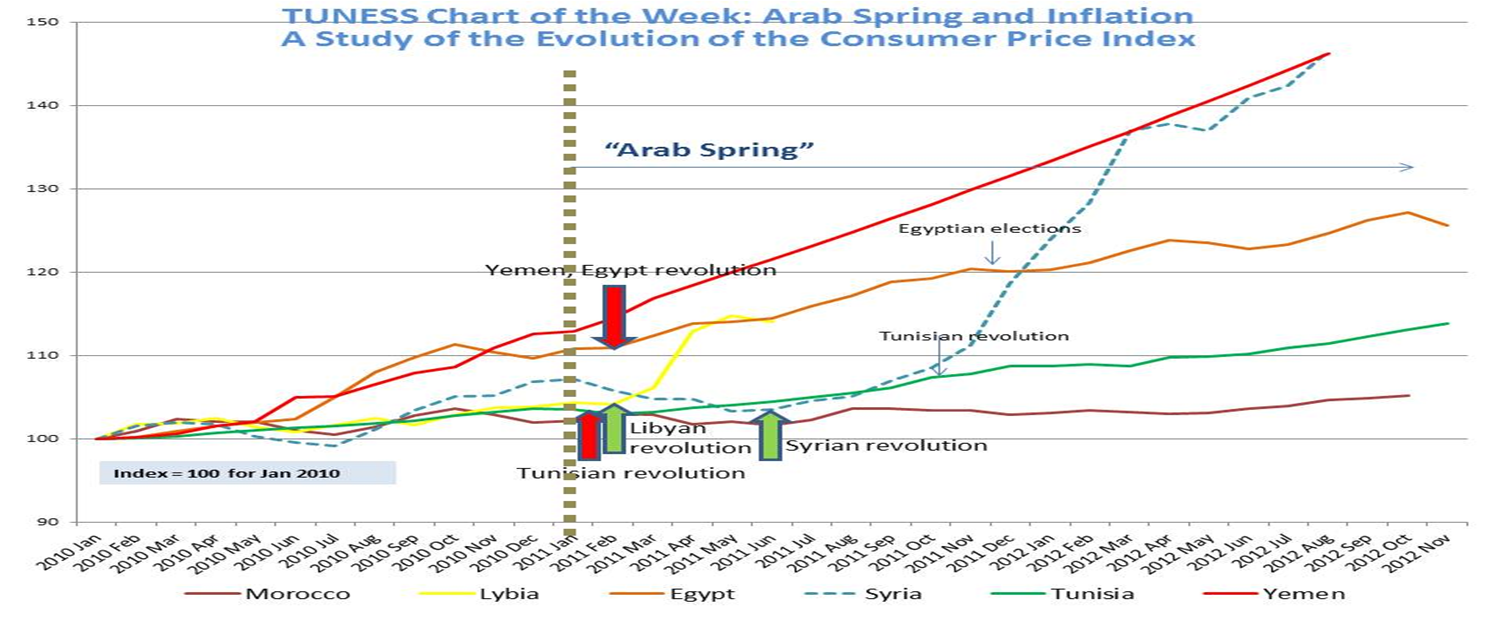TUNESS Chart of the Week (TCW), Friday Jan 04, 2013
We examine the impact of the Arab Spring on people's wallet and on the inflation trend . In accordance with the conventional wisdom, inflation has trended upward in the post revolution period for almost all Arab countries (except Egypt). Our 'Control' group included Morocco which experienced milder unrest. As expected, the increased cost of living is more pronounced in countries where the conflict and unrest were more violent and longer (Syria, Libya, and Yemen) compared to countries where the revolutions were shorter (Tunisia, Egypt).

We also break down in the case ofTunisia and Egypt, the monthly change in CPI before and after the elections of their respective constitutive assembly. While the inflation has mildly increased in Tunisia (monthly change in CPI .45% post election vs. .40% pre-election), it has substantially decreased in Egypt (.35% post elections vs. .80% pre-election). In conclusion, the Arab Spring seems to have caused higher cost of living mainly resulting from scarcer internal resources, depreciation of the local currency, surge of the sovereign risk and thus cost of borrowing, precarious security, and disruption of supply chains. It remains however unclear whether this phenomenon will be transient or permanent over the long run .
Chart prepared by Moez Hababou, PhD, TUNESS Research team,
Data source: IFS, IMF
Monthly change of the CPI
|
Country |
Pre Arab Spring/ revolution |
Post Arab Spring/ revolution |
|
Morocco |
0.18% |
0.1% |
|
Libya |
-0.04% |
1.8% |
|
Egypt |
0.86% |
0.6% |
|
Syria |
0.20% |
2.5% |
|
Tunisia |
0.33% |
0.4% |
|
Yemen |
1.09% |
1.3% |
